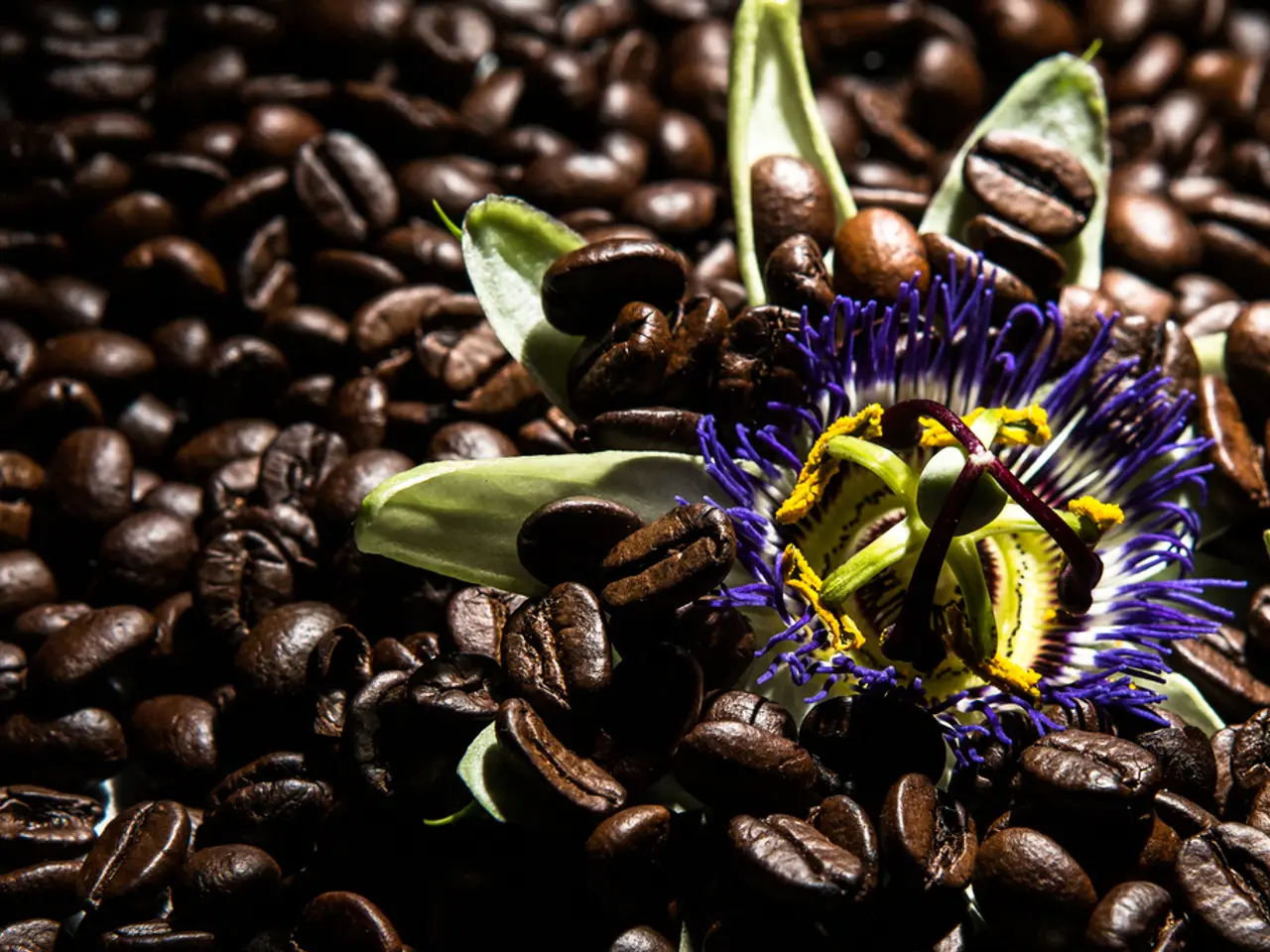Guideline for Growing Arabica Coffee: Detailed Instructions
Growing Arabica Coffee: Essential Soil Conditions for Optimal Results
Arabica coffee plants, known for their delicate nature and superior taste, thrive in specific soil conditions to ensure healthy growth and high-quality beans. Here are the key factors to consider when preparing the soil for your Arabica coffee plants.
Soil pH
Slightly acidic soils with a pH ranging from 6.0 to 6.5 are ideal for Arabica coffee cultivation. This acidity supports nutrient availability and healthy plant growth, providing the perfect foundation for your coffee plants.
Soil Type
Well-drained, loamy, and fertile soils rich in organic matter are optimal for Arabica coffee plants. Loamy soils with good drainage prevent waterlogging and root rot, which are detrimental to coffee plants. Soil fertility is a primary factor influencing land suitability for coffee production.
Moisture Requirements
Arabica coffee plants require consistent moisture but not waterlogged conditions. Adequate soil moisture supports carbon assimilation and fruit development, whereas water deficit can impair plant growth. Humidity is also important to prevent stress in coffee plants.
Drainage
Good drainage is essential to prevent waterlogging and root rot. Pots with drainage holes that are at least 12-16 inches in diameter are recommended for Arabica coffee plants. Avoid letting the plants sit in water-filled saucers.
Ideal Soil Mix
The ideal soil mix for Arabica coffee plants consists of equal parts potting soil, compost, and perlite. This combination provides the optimal balance of drainage, moisture retention, and nutrients for your coffee plants.
Space and Light
Arabica coffee plants should be spaced 3-5 feet apart, with one plant per container. They require 6-8 hours of indirect sunlight, ideally in partial shade to full sun.
Watering
Water the plants thoroughly, ensuring that the soil is moistened throughout, and then water again when the soil has dried out about halfway. If you notice browning leaves, this could be a sign of overwatering, so adjust your watering schedule accordingly.
In winter, reduce the watering frequency for Arabica coffee plants. Proper moisture management, drainage, and soil fertility contribute to sustained growth and high-quality Arabica coffee production.
By following these guidelines, you can create the perfect environment for your Arabica coffee plants to thrive, resulting in delicious, home-grown coffee.
[1] "Arabica Coffee: Cultivation, Varieties, and Production." Coffee and Cocoa International, vol. 63, no. 2, 2013, pp. 169-186.
[2] "Soil Fertility and Nutrient Management for Coffee Production." Tropical Soil Biology and Fertility, vol. 94, no. 3, 2013, pp. 549-562.
[3] "Climate Change and Coffee: Adaptation Strategies for Arabica Coffee Producers." Climate Change and Development, vol. 14, no. 4, 2016, pp. 337-351.
[4] "Coffee Cultivation: Best Practices for Sustainable Production." Sustainability, vol. 10, no. 11, 2018, pp. 3960.
Transforming the garden into a space that supports a coffee farm is an exciting home-and-gardening project. With coffee plants thriving in loamy, fertile, and well-drained soil, consider preparing a home-made soil mix containing equal parts potting soil, compost, and perlite to create the ideal lifestyle for your Arabica coffee plants.




